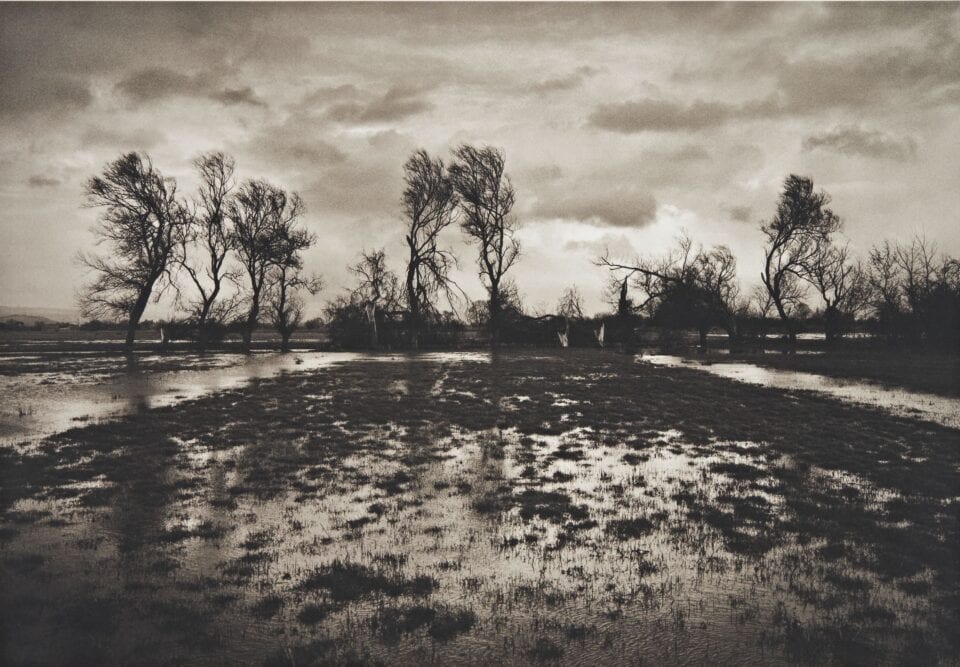To coincide with the reopening of The Stillness of Life at Hauser & Wirth Somerset, Don McCullin (b. 1935) presents a special online exhibition of platinum prints. The digital curation echoes McCullin’s continued passion for international travel and the salvation he seeks within the British countryside.
A: Where did your photographic journey begin?
DM: I left the RAF in 1956 and started photographing local people in Finsbury Park, London. A photograph I took called The Guvnors was picked up and printed in The Observer in 1959. This was the starting point.
A: How has your work changed from then until now?
DM: My work has changed dramatically. I started without any formal training. I saw there was a whole world out there and so I studied other photographers. I went to Berlin in 1961 to photograph the Berlin wall and found myself involved in a huge international situation.
A: What camera do you use and why?
DM: I don’t use a single camera. One camera is good for landscapes; one is good for social documentary. These platinum prints were shot on a Mamiya Press Camera which produces a 6 x 9cm negative which is large. David Bailey recommended I try this camera for its great lens. I’ve now had 4 of them over last 30/40 years.

A: What do landscapes mean to you? What stories are you looking to tell?
DM: Freedom and the experience to get away from war and destruction. Landscapes have given me the opportunity to escape and clear my mind.
A: You refer to the trees as “etchings” that frame the geography. What, for you, constitutes a successful image?
DM: One that sits comfortably in the frame – that gives you information. A photograph must resonate with the viewer and move them in some way, especially if it has a political message or shows injustice. It should hold the viewer and make them feel the same way the photographer did when they took the photo.
A: With the title of this new exhibition being about “stillness.” How do you balance energy and stasis within your photographs?
DM: Photography demands an enormous input of energy – to endure – it is a huge task. For this stillness, I didn’t have to ask permission or share the environment with danger.

A: Nothing ever stays still in life; change is always to be expected. How do your photographs feed into this idea?
DM: There is a tree that I have photographed over the hill near my home in Somerset. I noticed recently a huge branch has fallen from it. The tree has changed. I must always photograph today, in the moment. One can’t go back.
A: Out of this show, is there a particular image that means the most to you?
DM: Very hard to choose. Each photograph is about a personal experience; each image has a different meaning. The Somerset landscapes are naturally very close to my heart. It is a spiritual home for me. The dark room – where I print all my Gelatin images – is an extension to my experience. What goes on in daylight then goes into the dark room and I inject my thoughts and emotional energy into each image. There is activity.
A: Are there any new works that have never before seen?
DM: I created a series of new arctic images following a trip to Svalbard last year, which was always a lifelong ambition for me. The Arctic really encapsulates what it is to be in complete stillness. These were first shown in my Hauser & Wirth Somerset exhibition earlier this year, and a platinum edition is featured within the online selection.
Don McCullin’s work is available to view online now. Click here.
Credits:
1. Glencoe. 1992, printed in 2016. Platinum Print. Edition of 5. Somerset Edition. Image: 38.5 x 53 cm. Sheet: 56 x 77 cm. © Don McCullin. Courtesy of the artist and Hauser & Wirth.
2. The Arctic North, Svalbard Archipelago, 2019, printed in 2019. Platinum Print. Edition of 5. Somerset Edition. Image: 35 x 53 cm. © Don McCullin. Courtesy of the artist and Hauser & Wirth.
3. Somerset Levels, Glastonbury. 1990s, printed in 2016. Platinum Print. Edition of 5. Somerset Edition. Image: 36.7 x 53 cm. Sheet: 55.5 x 77 cm.© Don McCullin. Courtesy of the artist and Hauser & Wirth.





